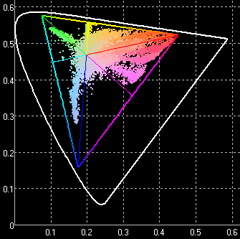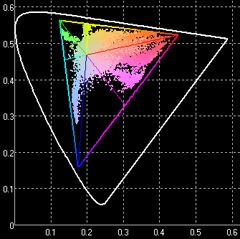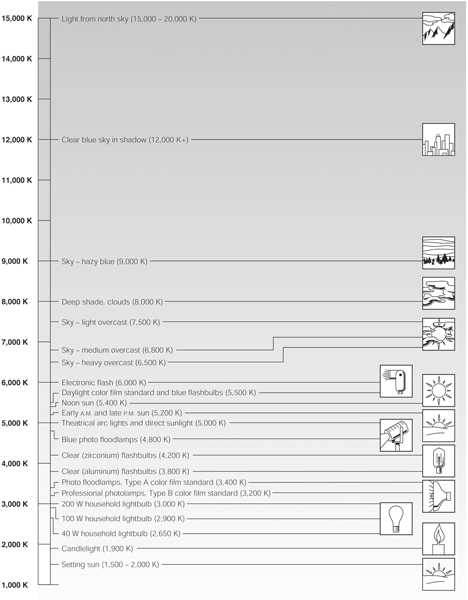Schedule
(subject to change)
http://www.basearts.com/curriculum/Res.Photo.htm
Syllabus Overview Expectations, Requirements, Objectives, Best Practices.
Assignment:
- Bring Camera to second class meeting with cables (usb/firewire), or card reader.
- Locate and begin reading Camera Manual - Cover to Cover.
- Set Camera to highest resolution / lowest compression.
- TURN
OFF THE FLASH! Until further notice.
- Make 5-10 Digital Camera images between the first and the second class meeting
- Bring these to share on the 2nd class meeting. - (1)
- Begin JOURNAL of questionable functions, settings, usage, portfolio ideas, reading notes etc...
- Email
john@basearts.com with your current email address
- include SFAI Digital Photo in the subject line.
Sites:
Local Galleries and Suppliers
Camera Reviews
http://dpreview.com
www.steves-digicams.com
http://www.keh.com
---
Masters of Photography - Good starter site for Analogue Masters
http://www.masters-of-photography.com/
Lomographic
Society
http://www.lomographics.com
Lecture:
Digital Technology
Transferring images from camera/media to system.
Begin fundamentals of camera technology/exposure.
Lab:
Work with camera connection / file transfer
Assignment:
Shooting in Low Light without a flash. - (1)
Feel free to experiment, try to find the lowest
level of light possible to render a readable image.
Depending on what you may or may not know regarding ISO, experiment with
this setting in your camera as well.
Experiment with White Balance Bracketing:
| Color Temperature | Light Source |
| 1000-2000 K | Candlelight |
| 2500-3500 K | Tungsten Bulb (household variety) |
| 3000-4000 K | Sunrise/Sunset (clear sky) |
| 4000-5000 K | Fluorescent Lamps |
| 5000-5500 K | Electronic Flash |
| 5000-6500 K | Daylight with Clear Sky (sun overhead) |
| 6500-8000 K | Moderately Overcast Sky |
| 9000-10000 K | Shade or Heavily Overcast Sky |
Artists:
Lazlo Moholy-Nagy
Man Ray
Bruce Conner
David Hockney
Olivia Parker
http://oliviaparker.com/newindex.php
Reading:
Moholy-Nagy - From Pigment to Light - 1936
Camera Manuals continued - journal with questions/notes from the manual.
Digital Camera Review - Technical Glossary
http://www.dpreview.com/learn/?/Glossary/
http://www.dpreview.com/learn/?/Glossary/Camera_System/
Local Galleries and Suppliers
REVIEW
------------
Camera Configuration- Highest Resolution
- Lowest Compression
- No Flash
- Shooting Modes - (*P), Av, Tv, M
- ISO - (*Auto, 50, 80, 100, 200, 400), 800, 1600, 3200
- White Balance - Auto, Explicit Selection, Custom-------------
Experiments with :- Half Step Shutter Lock
Auto Exposure
Auto Focus
- Auto Bracketing
- White Balance Bracketing
- Exposure and Focus Modes - Multizone/Pattern, Center-weighted, Spot
- Exposure Compensation-------------
Best Practices Camera- Formatting media card after every major upload
(erase all, delete all, format)-------------
Work FlowAdobe Bridge - preview, review and editing
Lecture:
Camera Operation
- Exposure basics
Lab
First File Transfers
Assignment:
Bracketing Exposures
3 Subjects - 3-5 exposures for each with alternate exposure. - (3)
1st exposure according to meter reading.
2nd + .5(.3, .7)half step greater aperture/shutter selection or more exposure
(over)
3rd + 1 whole step (full stop) greater aperture/shutter selection (over)
4th .5(.3, .7) half step smaller aperture/shutter selection or less exposure (under)
5th - 1 whole step smaller aperture/shutter selection or less exposure
(under)
Artists:
Eadweard Muybridge
Paul Strand
Eugene Atget
Minor White
Sites:
Camera / Scanner
Scanning Procedures - Flat Art
OPTIONAL : Objects for Scanning - 3 Dimensional Objects as well as prints or flat art that you may want to digitize. - (2)
Review Historical Photograms/Montage works:
Photograms and Montage Samples
Niko Robinson - Student Scanner work
more scanner work - various
Assignment:
Contact Sheets of Brackets/Equivalents
Create a minimum of 3 contact sheets documenting bracketing exposure experiments. - (4)
Lazlo Moholy-Nagy
Man Ray
David Hockney
Olivia Parker
http://oliviaparker.com/newindex.php
Bruce Conner
Photographers Supply Info:
436 Bryant Street
(between 2nd St & Jack London Aly)
San Francisco, CA 94107
(415) 495-8640
http://www.photosupply.com
a map: http://www.yelp.com/biz/photographers-supply-san-francisco-2
----------
Also, A number of you were asking about educational pricing on the Adobe Suite - Bridge and Photoshop.
Here are a couple of retailers:
Online Educational Retailers
academic super store:
http://academicsuperstore.com
Adobe also has an educational track via their site store:
https://store1.adobe.com/cfusion/store/html/index.cfm?event=displayStoreSelector&nr=1
Another is Freestyle *includes educational sales of photographic supplies etc…
http://www.freestylephoto.biz/

Lecture
-
Camera Operation
- Exposure basics
- Zone
System Introduction: (Digital Application) Practical
Fig 1
Fig 2
Zone System | Wikipedia Entry:
http://en.wikipedia.org/wiki/Zone_System
Photoshop Introduction
- File Browser - Bridge
- File Types, Format
- Contact Sheet
- Automation Tools
- Exposure basics
Lab:
Assignment:
- Equivalents: Depth of Field
3-5 Images which illustrate the side effects of aperture selections. -(5)
Aperture:
Fig. 1
Fig. 2
Wikipedia Entry:
http://en.wikipedia.org/wiki/Zone_System
Depth of Field Calculator
http://www.dofmaster.com/dofjs.html
Reading:
Ansel Adams - .pdf - 344KB - 3 pages
Edward Weston - .pdf - 360KB - 3 pages
(first left hand spread of each essay is last page of that essay)
Artists:
Ansel Adams
Edward Weston
FRED ARCHER
Robert Adams
Sites:
The photographs in Intimate Nature: Ansel Adams and the Close View represent an under recognized and rarely examined aspect of Ansel Adams's half-century-long career: his study of the intimate details of nature through the close view of his camera.
http://www.creativephotography.org/education/educatorsGuides/anselAdams/
Other Guides:
http://www.creativephotography.org/education/educatorsGuides/
Lecture:
Photoshop:
PS Best Practice #1 - Duplicate the pixel based background layer as
first step on opening a .jpeg.
- Layers Palette Introduction
- Adjustment Layers
- Levels Adjustment Layers
Photoshop User Guide - 42.6Mb PDF
Lab:
Assignment:
-
Equivalents: Motion / Blur
3-5 Images which illustrate the side effects of shutter speed / time
value selections. - (6)
Shutter / Time Values:
Fig 1
Reading:
Henri Cartier-Bresson - 234KB
Artists:
Henri
Cartier-Bresson
http://www.magnumphotos.com/Archive/C.aspx?VP=XSpecific_MAG.PhotographerDetail_VPage&l1=0&pid=2K7O3R14T1LX&nm=Henri%20Cartier%20%2D%20Bresson
John Divola
http://www.divola.com/
Uta Barth
http://www.sieshoeke.com/artists/uta-barth
Hiroshi Sugimoto
http://www.sugimotohiroshi.com/portfolio.html
Lecture:
Photoshop:
- Adjustment Layers
- Levels Adjustment Layers
- Histogram
- Size / Resize / Resolution
- Curves - Adjustment Layers
- Channel Mixer- Adjustment Layers
- Size/Resize/Resolution
- Shadows and Hightlights
- Working with layers as masks
PS Best Practice #1 - Duplicate the pixel
based background layer as first step on opening a .jpeg.
PS Best Practice #2 - All adjustments to adjustment layers - no
pixel damage.
Lab:
Review :
Bracketing
Equivalents (Shutter and Aperture side effects)
Wrap up current technical experiements
Readings:
Robert Adams - Truth
Robert Adams - Beauty
Artists:
John Baldessari
Sophie
Calle
Nick Waplington
Michael Light
http://www.michaellight.net/
Lauren Greenfield
http://www.creativephotography.org/education/educatorsGuides/girlculturefacultyguide/
Henry Wessel
http://www.renabranstengallery.com/wessel.html
Stephen Shore
http://www.masters-of-fine-art-photography.com/02/artphotogallery/photographers/stephen_shore_13.html
Todd Hido
Larry Sultan
Sites:
SFAI Spring Break
Lab:
- Converting Layers to Smart Objects
- Sharpening with Unsharp Mask
Lecture:
Printing
Handout - Processing
a Digital Image.pdf
Printing Demonstration - Epson R3800
Printer
:
- Resolution (review)
- File Preparation
- Color Management
- Color Modes


-
Papers
Surface/Finish
Texture
Color
Weight
Lab:
Printing
5 prints - 5 pnts. - 8x10
minimum - (8)
Artists:
Device/Paper Profiles - additional resources http://www.basearts.com/Res.Printing.htm
Device/Paper
Profiles - additional resources
http://www.epson.com/profiles
http://www.moabpaper.com/profiles
http://www.ilfordpaper.com/profiles
http://www.inkpresspaper.com/ profiles
http://www.redrivercatalog.com/profiles/index.htm
-----------------
Print Permanence
- An Epson White Paper -
http://www.epson.co.jp/e/technology/print_permanence_basics.htm
Color
Field Guide - how to install and apply
Epson's ICC
Profile Guide
Red River Paper
-How to Install and apply profiles.Epson(PC)
Red River Color Profiles
-How to Epson(MAC)
Digital Art Supplies (San Diego based, print supply )
http://www.digitalartsupplies.com
PS Print (LA based commercial printer)
http://www.psprint.com/
Preparing files for print - Pagemaker, Illustrator
http://www.psprint.com/helpcenter/preparingyourfiles/digitalcheck_pm.asp
Urban Digtial Color (SF, printer)
http://www.urbandigitalcolor.com/urbandigital/udcframe.html
The Blow Up Lab
http://www.blowuplab.com/
Dickerman Prints
http://dickermanprints.com/
Rayko
http://raykophoto.com/
The New Lab
http://www.newlab.com/
Revised Handout - Processing
a Digital Image.pdf
Shooting Field Trip : Greg's idea with my input...
Greg has made a proposal that I think is fantastic but would like to modify slightly and open for input from all of you... The suggestion is to pick a subject and all photograph it together(see below for further clarification). I would prefer that we go out for a hike into N. Beach or China town and shoot together working with individual issues that each of you would like to improve. We could set out some key concepts/techniques to address.
If any one has further suggestions, concerns, requests please email me and I'll forward to the group. Also, I propose we do it soon so it doesn't impact our last 2 classes.
John
-----Original Message-----
From: Greg Tabar [mailto:gtabar@gmail.com]
Sent: Monday, March 30, 2009 1:33 PM
To: John Sappington
Subject: Suggestion for photo class
Hi John,
As we wrap up the class, I would very much like to see a 'hands-on' session. It would be very helpful to pick a subject, such as a backlit object, and then practice photographing it during the class. You could walk around and correct our mistakes, as well as make suggestions on the best way to capture the image.
I have found that this method is the best way for me to learn, and you could show us a lot of great tips that we could immediately apply. I'm sure some of the other classmates would be interested, too. Could we try it? Maybe you could send out a questionnaire to gauge the interest level?
Some sample scenarios that would be very useful and that would add-on to our existing learnings are:low light, fast action/blur, backlight, portraits, or any other difficult-to-shoot scenario.
Artists:
Jeff Wall
Bernd and Hilla Becher
Gregory Crewdson
Richard Barnes
Lecture:
- CD and DVD Burning
Photoshop:
- Working with and around Selections
- Photo Filters- Adjustment Layers
- Sharpening
Unsharp Mask
Sharpening
LAB Color Mode/Luminance Sharpening
- History Brush
- Compositing
- Extract
- Selections - Paths (Pen)
- Blending Options
Lab
Printing Continues...
- Lens Selection
Lens Selection:
Link to external sites of interest regarding lens selection.
DPReview Lens Reviews
http://www.dpreview.com/lensreviews/
DP Review Lens Widget:
http://www.dpreview.com/lensreviews/
Angle of View:
Fig 1
- Lighting
- Utilizing Ambient Light
- Flash
Composition
-tone
-balance
-line
-framing
Artists:
William Carlos Williams
William Klein
Lorna Simpson
Richard Prince
David Hockney
Reading:
Susan Sontag - Plato's Cave
-----
Rule of Thirds
http://en.wikipedia.org/wiki/Rule_of_thirds
http://en.wikipedia.org/wiki/Image:Rule_of_thirds_1845_George_Field_Chromatics.png
Golden Mean
http://en.wikipedia.org/wiki/Golden_ratio
Reading:
Lens Selection:
Link
to external sites of interest regarding lens selection.
DPReview Lens Reviews
http://www.dpreview.com/lensreviews/
Angle of View:
Fig 1
http://www.cambridgeincolour.com/tutorials.htm
http://www.cambridgeincolour.com/tutorials/camera-lenses.htm
http://www.cambridgeincolour.com/tutorials/hyperfocal-distance.htm
FINAL Critique - Current progress on portfolios - (5 pnts) - (9)
------------
Final Evaluation is here --> TEST
Camera RAW
dcraw is an open source computer program which is able to read numerous raw image formats, typically produced by high-end digital cameras. dcraw converts these images into the standard PPM and TIFF image formats. This conversion is sometimes referred to as developing a raw image (by analogy with the process of film development) since it renders raw image sensor data (a "digital negative") into a viewable form.
http://en.wikipedia.org/wiki/Dcraw
--------
The Unidentified Flying Raw (UFRaw) is a utility to read and manipulate raw images from digital cameras. It can be used on its own or as a Gimp plug-in. It reads raw images using Dave Coffin's raw conversion utility - DCRaw. UFRaw supports color management workflow based on Little CMS, allowing the user to apply ICC color profiles. For Nikon users UFRaw has the advantage that it can read the camera's tone curves. Even if you don't own a Nikon, you can still apply a Nikon curve to your images.
Gimp plugin to decode RAW
http://en.wikipedia.org/wiki/UFRaw
GUI Ports:
Windows
http://www.wizards.de/rawdrop/
MacOSX
http://www.frostyplace.com/dcraw/
Legal / Copyright Issues
Protecting your images
Respecting the work of others
Photography - Model Release Examples
Photographers Rights
Wikipedia entry regarding
model release/liability waivers for subjects in a photograph.
http://en.wikipedia.org/wiki/Model_release
Example Model Release Forms - my
boilerplate examples
http://www.basearts.com/curriculum/legal/photo
release examples.txt
Dan Hellers very wording primer regarding the release.
(who is Dan Heller? http://www.danheller.com/)
http://www.danheller.com/model-release-primer
Photo District News Online Business/Legal Section
http://www.pdnonline.com/pdn/businesslegal/index.jsp
CAA
Intellectual Property and the Arts
This section provides links to CAA’s activities on intellectual-property matters as well as to useful websites and resources of other organizations.
CAA’s members are both copyright owners and users of copyrighted material. Artists and authors create new works, and many also quote from or repurpose material created by others. CAA encourages all members to become familiar with intellectual-property law as it affects you.
http://www.collegeart.org/ip/#CopyrightBasics
Creative Commons is a nonprofit
organization that offers flexible copyright licenses for creative works.
http://creativecommons.org/
Electronic Frontier Foundation
http://www.eff.org
Intellectual Property Online: Patent, Trademark, Copyright
http://www.eff.org/IP/
U.S. Copyright Office
http://www.copyright.gov
Digimarc
www.digimarc.com
http://www.digimarc.com/mypicturemarc/
The Free Expression Policy Project
http://www.fepproject.org/fepp/fairuseintro.html
Orphan Works
An orphan work is a copyrighted work where it is difficult or impossible to contact the copyright holder. This situation can arise for many reasons. The author could have never been publicly known because the work was published anonymously or the work may have never been traditionally published at all. The identity of the author could have been once known but the information lost over time. Even if the author is known, it may not be possible to determine who inherited the copyright and presently owns it. Nearly any work where a reasonable effort to locate the current copyright owner fails can be considered orphaned. However the designation is often used loosely and in some jurisdictions there is no legal definition at all.
http://en.wikipedia.org/wiki/Orphan_works
http://www.copyright.gov/orphan/
Walter Bejamin, "The Work of Art in the Age of Mechanical Reproduction", 1936 - Excerpt translanted by Harry Zohn
